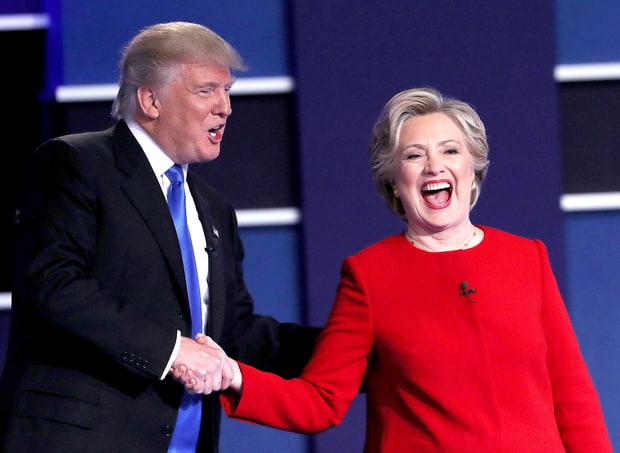Where Do Trump And Clinton Stand On Syria?
NEW DELHI: As Hillary Clinton and Donald Trump battle it out in the presidential campaign that is now in its final two weeks, one of the key foreign policy questions that will be amongst the next President’s greatest challenges barely finds mention. As the death toll mounts in war torn Syria, the fact that US jets and ground troops are both involved in the conflict cannot be glossed over.
The two candidates barely touched on the issue of Syria during the presidential debates, indicating that its not an issue that will impact voter’s decision beyond a limited extent. This week, however, Trump alleged that Clinton’s Syria policy will culminate in “world war III” -- exposing the vast differences in position between the two candidates over US involvement in Syria.
Both Clinton and Trump agree that foreign policy under Barack Obama has been erroneous, but where they differ is on where and how Obama’s policy has gone wrong. Trump has criticised Obama on trying to strike a faulty balance between going after the Islamic State and trying to topple Syrian President Bashar al Assad. According to Trump, the priority needs to be battling the Islamic State, and leaving the rest of Syria to Assad. Battling the Islamic State can even factor in cooperation between the US and Russia. “I say the first thing we have to do is get rid of ISIS before we start thinking about Syria,” he told Reuters on Tuesday. “Assad is secondary, to me, to ISIS.”
Clinton’s position is closer to Obama’s, as Clinton favours ramping up pressure on Assad while tackling the Islamic State. Clinton has also proposed “no fly zones.” “A no-fly zone can save lives and hasten the end of the conflict,” Clinton said. She added that it would “take a lot of negotiation. It would also take making it clear to the Russians and the Syrians that our purpose here was to provide safe zones on the ground.”
Both positions have a range of faults. Trump’s, most glaringly, provides little to no detail regarding just how he plans to go after the Islamic State, as tackling ISIS is the only Syria specific policy proposal on offer from Trump. There is no clarity on how Trump plans on dealing with Assad once ISIS is defeated, or even exactly how he plans on defeating the militant group.
Clinton’s approach on the other hand suffers from the exact opposite problem. While Trump’s policy centers on leaving Assad alone, Clinton’s calls for even more intervention. Take the example of the “no fly zone” proposal. Critics of the move have raised serious questions about how “no fly zones” risk provoking the Russians. I wouldn’t put it past them to shoot down an American aircraft,” said James Clapper, the US director of national intelligence, on Tuesday. Critics have further questioned how using US military power to establish and police a safe space for beleaguered Syrian civilians would contribute to the downfall of President Bashar al-Assad – the explicit goal of US policy in Syria.
Clinton has attempted to address the above by speaking of a “negotiated no-fly zone” -- that involves a deal with Russia to create agreed-upon areas where no jets bomb. This seems more idealistic than plausible, as it would involve Russia having to convince their ally -- Assad -- to ground his own planes to meet a demand from the United States.
In conclusion, both Trump and Clinton have a piecemeal, ambiguous policy toward Syria at best. This should be a cause for concern given how central Syria is to US foreign policy at the moment, whereby it is most certainly going to be the biggest challenge faced by the new US President.





